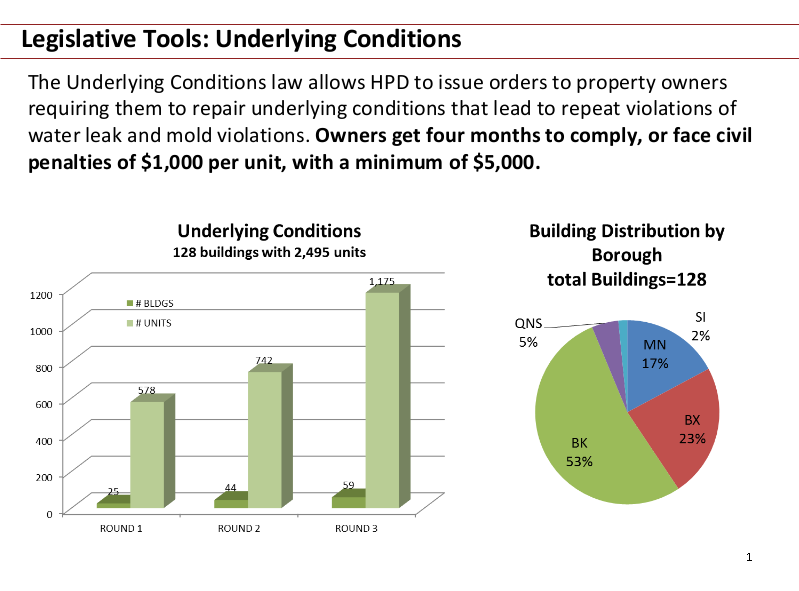Multifamily Lenders Gather to Review Distressed Properties and Rising Sales Prices
.jpg)
VaNessa presented an economic picture of household income in the Bronx that showed little change from 2014 with median income rising very modestly. The Bronx continues to lag behind the rest of the city in that category and data on new people moving into the Bronx showed that the people moving into the borough from other counties or from other countries continue to have incomes lower than the people already living in the Bronx.
.jpg)
Over the past 5 years, the median income in the Bronx declined while the median rent continued to rise.
.jpg)
The BIP data showed a very modest increase in the number of buildings with higher than 800 BIP scores. UNHP recommends that banks follow up with properties that score 800 or more as it indicates that the building is likely to be in financial and/or physical distress. The information that was most alarming was the sharp increase in multifamily sales prices in 2015. In the second half of 2015 the purchase price per unit rose to $148,000 per dwelling unit. Meanwhile, the most recently available net income data in buildings increased very modestly.
.jpg)
Jim Buckley presented information on several recent set up sheets for buildings for sale and the price ranged from $140,000 to $200,000 per dwelling unit. That information was supplemented by a purchase made in 2015 that showed these prices being realized. The banks involved had provided mortgages of approximately 75% of the purchase price. While meeting conservative underwriting criteria, it raised questions for UNHP in relation to the expectations of the purchasers. The possibility of raising rents significantly to meet the new debt and equity return investments could make it very difficult for owners to maintain services and it could increase pressure on tenants to move to make room for higher income tenants.
The UNHP presentation was followed by a presentation by HPD First Deputy Commissioner Don Shacknai, Code Enforcement Assistant Commissioner Anne Marie Santiago, Preservation Assistant Commissioner Kim Darga and Neighborhood Strategies Deputy Brent Meltzer. HPD provided information on the range of their preservation and code enforcement activities and offered to participate in owner outreach meetings with banks that were interested in hosting such events.

UNHP has collaborated with NYC Department of HPD, Enterprise and individual banks to provide information on low-cost renovation programs to building owners. In addition to participating in two HPD Neighborhood Helpdesk events in the Bronx, UNHP attended a seminar for building owners sponsored by Flushing Bank. The seminar and the Helpdesk events provide information about violation removal, small building programs and low-cost renovation loans. The Building Indicator Project is now shared four times a year with 83 groups; 36 banks, 42 community groups, HPD and the four bank regulators. The widespread use of the BIP, its accuracy and regular release of data has continued to make the BIP and the Multifamily Assistance Center a significant tool for identifying and improving distressed properties in NYC.
UNHP would like to thank all our partners and supporters who help make our work with the Multifamily Assistance Center possible especially Capital One, Enterprise Section 4 funding and JPMorgan Chase who sponsored this event.
.jpg)


